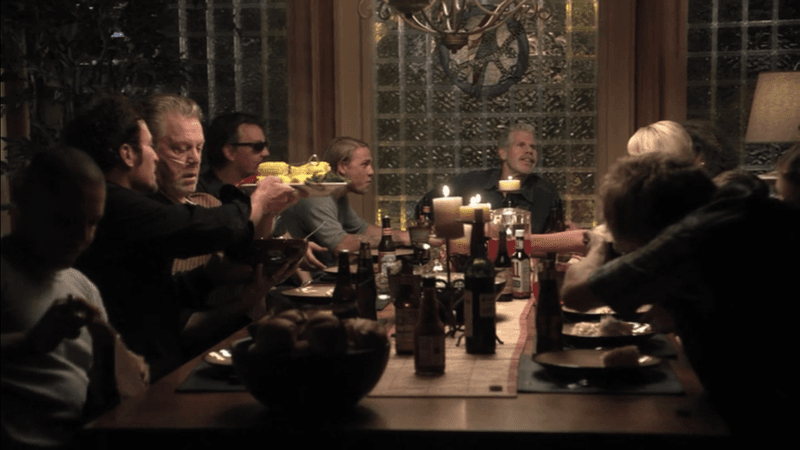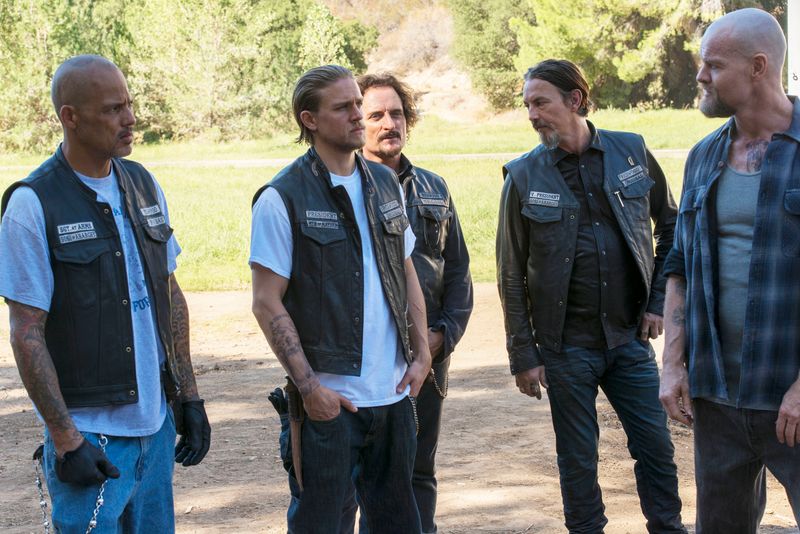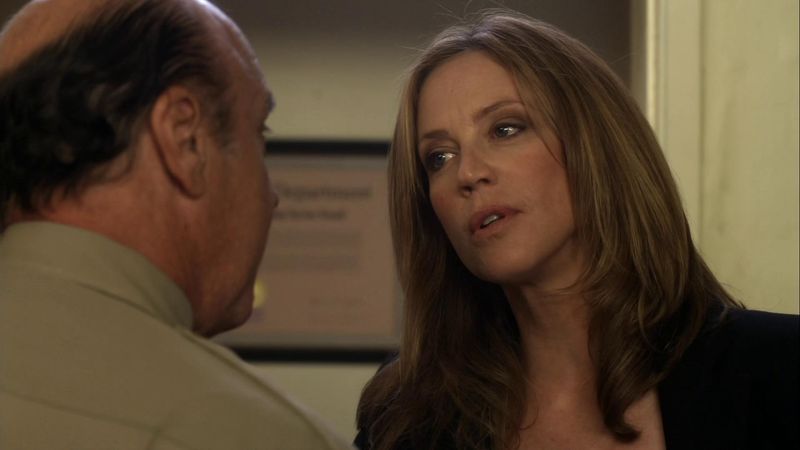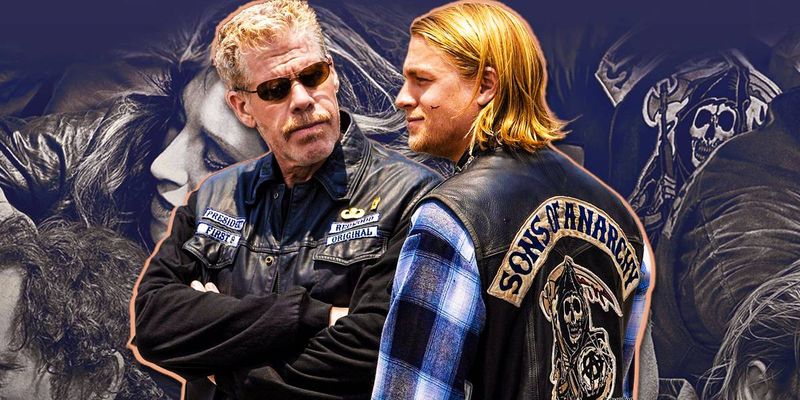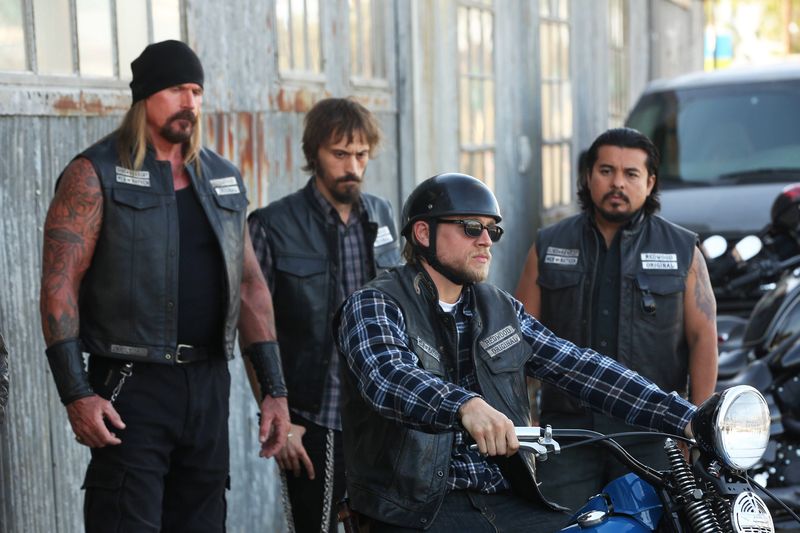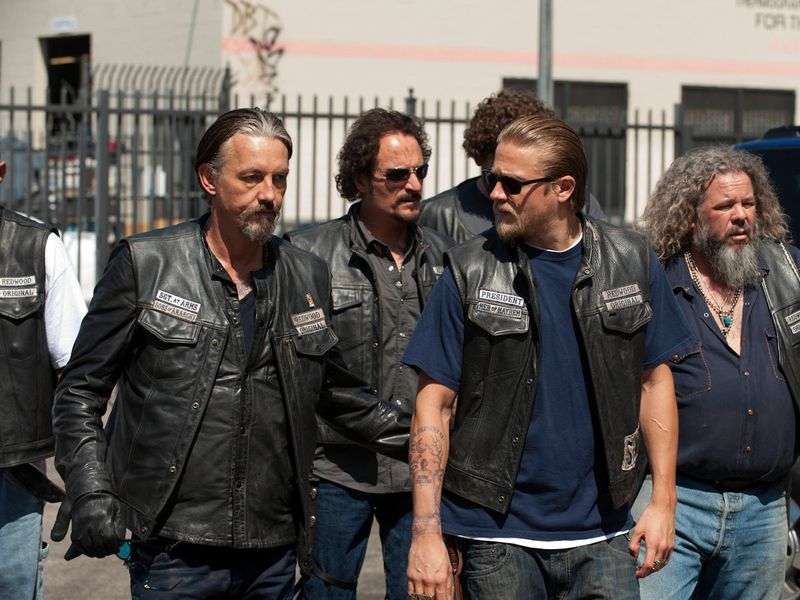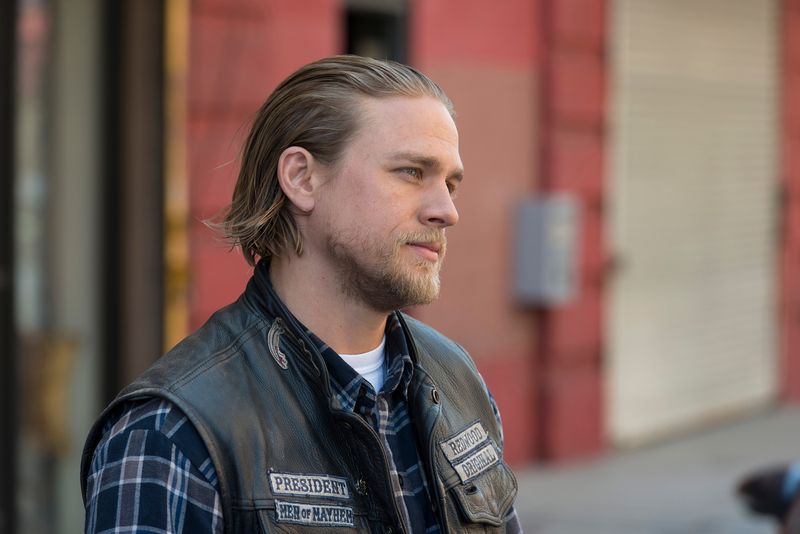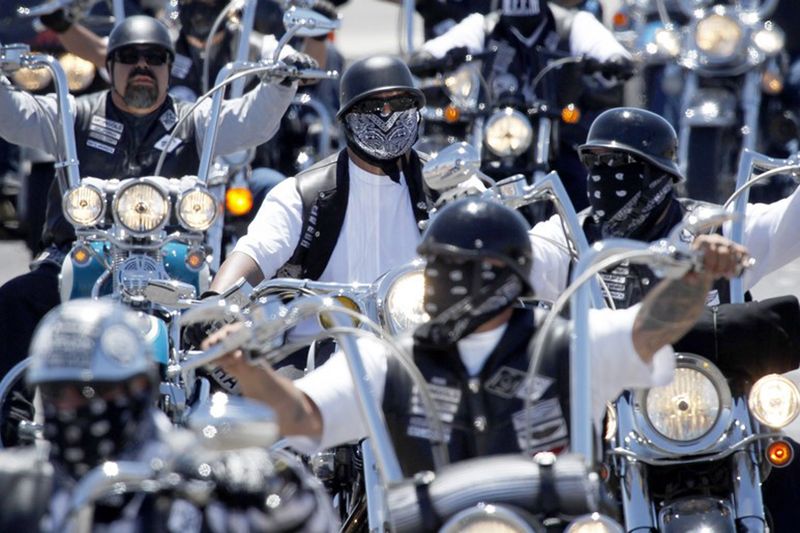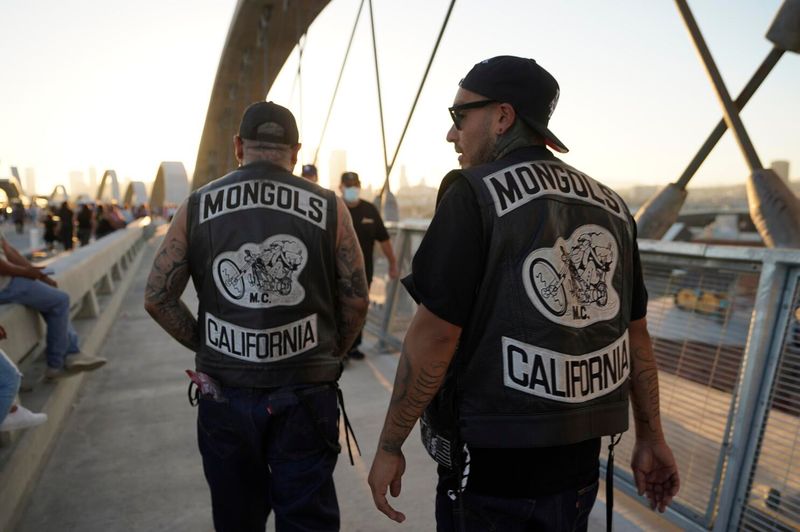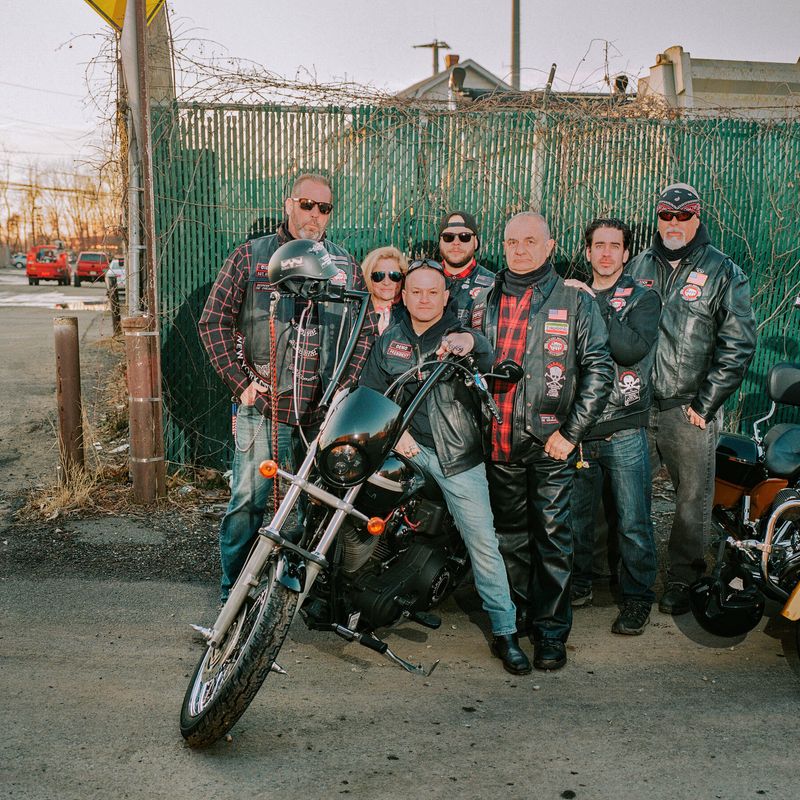Sons of Anarchy rode hard and fast into the world of outlaw biker culture—but for all its grit and grime, the show took some serious creative liberties. While it delivered gripping drama and unforgettable characters, the series often veered far from the realities of actual motorcycle clubs in California. Here are 17 things it got totally wrong about the real biker scene.
1. They’re Not All Ruthless Criminal Empires
Not every biker gang is a ruthless criminal syndicate. Contrary to the depiction in Sons of Anarchy, many California motorcycle clubs are more about camaraderie and the love of riding rather than engaging in illicit activities like drug trafficking or arms dealing. The brotherhood and lifestyle are often prioritized over organized crime. Many members are law-abiding citizens who simply enjoy the open road and the sense of community that comes with being part of a club. This portrayal in the show lacks the nuance of reality, where not all bikers are outlaws.
2. Clubhouses Aren’t Armories
The show portrays clubhouses brimming with weapons, making them appear as fully stocked bunkers. In reality, most clubhouses are laid-back hangouts. They’re places where members gather to enjoy each other’s company, not to stockpile an arsenal. The average biker club’s clubhouse is more about friendship and community than firepower. Members often gather to plan rides, share stories, or just relax. This stark contrast highlights the embellishments made for dramatic effect in Sons of Anarchy, which could mislead viewers about the true nature of these spaces.
3. Shootouts Aren’t a Daily Occurrence
Unlike the frequent gunfights seen in the series, real biker confrontations are rare. Violence, when it occurs, is usually strategic and discreet. Biker clubs tend to avoid the attention that comes with public shootouts, preferring to handle conflicts quietly. This keeps law enforcement scrutiny at bay and maintains the club’s image. The sensational shootouts in Sons of Anarchy might make for thrilling television but do not accurately represent the day-to-day experiences of most motorcycle clubs. Real-life bikers are more likely to meet peacefully to discuss issues than engage in a gunfight.
4. The Feds Don’t Have a Full-Time Presence
In Sons of Anarchy, federal agents seem omnipresent, always on the club’s tail. In reality, while agencies like the ATF do monitor outlaw gangs, they don’t hover constantly. Surveillance is typically more focused and less invasive. The show exaggerated federal involvement for dramatic tension, but actual biker clubs aren’t subject to such relentless scrutiny. Members are often everyday people who work regular jobs and ride for leisure, not under constant watch. This portrayal in the series distorts the true extent of federal engagement with biker clubs.
5. Biker Gangs Don’t Wear Their Rank Like the Military
In the show, biker ranks are displayed almost like military insignia, with a strict hierarchy. Real clubs do value patches, but the structure is less rigid. While there is respect for leadership positions, the dynamic is more about equality and less about formal rank. Members earn their patches through loyalty and participation, not through a militarized system. The show’s portrayal may lead to misunderstandings about how these clubs operate, emphasizing a hierarchy that doesn’t align with reality. In truth, camaraderie and mutual respect are more important than rank.
6. No One Switches Clubs That Easily
In biker culture, loyalty is paramount. The ease with which characters in Sons of Anarchy switch allegiances is unrealistic. Joining or leaving a club is a serious decision, often met with severe consequences if not handled properly. Real-life bikers take these commitments seriously, with loyalty deeply embedded in the culture. Switching clubs can lead to conflict and is not undertaken lightly. The show’s portrayal of characters flipping between clubs undermines the gravity of such actions in real motorcycle communities, where trust and dedication are integral.
7. They Don’t Run Entire Towns
Sons of Anarchy depicts SAMCRO as controlling their fictional town of Charming. In reality, no biker gang wields such power over a community. Clubs may have influence, but they don’t run towns. Law enforcement and local government maintain authority. The show’s dramatization serves plot needs, but real bikers are part of the community, not overlords of it. Most clubs have members who integrate into local life, contributing to the economy and culture, without exerting the control seen on the series. The depiction of total dominance is far from accurate.
8. Club Presidents Don’t Make All the Decisions
Jax Teller’s leadership style in Sons of Anarchy resembles a mob boss, making unilateral decisions. However, real clubs operate more democratically. Decisions are often made during “church” meetings where members discuss and vote on issues. This collective approach ensures everyone’s voice is heard, fostering a sense of community. The show simplifies this dynamic for storytelling purposes, sidelining the importance of group consensus. In reality, club presidents lead but don’t dictate. They guide discussions and uphold club values while respecting the democratic process that is central to club operations.
9. Outlaw Doesn’t Always Mean Illegal
The term “outlaw” in biking refers to clubs not sanctioned by the American Motorcyclist Association (AMA), not necessarily criminal behavior. Sons of Anarchy often equates outlaw with illegal, but many clubs focus on the freedom of riding and brotherhood. Members cherish autonomy from mainstream biking organizations, not because they’re engaged in crime, but because they embrace a different lifestyle. The show’s conflation of “outlaw” with “crime” overlooks this nuanced distinction, painting all bikers with a broad brush that doesn’t reflect the diversity of clubs.
10. Women Aren’t Just “Old Ladies” or Props
Sons of Anarchy often portrayed women in limited roles, primarily as “old ladies” or secondary characters. In reality, women play significant roles in biking culture. Many ride their own motorcycles, lead clubs, and have respected positions. They contribute to the community and culture, often organizing events and supporting club activities. This empowerment and involvement contrast with their often marginalized portrayal on the show. The real-world representation of women in biking is one of strength and leadership, challenging stereotypes and creating a more inclusive environment.
11. Tattoos and Patches Mean More Than the Show Shows
Biker tattoos and patches are laden with meaning, often signifying allegiance, achievements, and personal history. Sons of Anarchy used these symbols but sometimes without context. In reality, each patch or tattoo tells a story, marking important milestones or affiliations. They are earned, not given lightly, and hold great personal significance for the wearer. The show glossed over this depth, focusing on aesthetics rather than storytelling. For real bikers, these symbols are sacred, embodying identity and belonging within the club, beyond mere decoration or dramatization.
12. You Can’t Just Ride Whatever You Want
In Sons of Anarchy, characters ride a variety of motorcycles. However, most outlaw clubs have strict rules about the types of bikes members can ride. Typically, American-made motorcycles like Harleys are preferred, reflecting a commitment to tradition and brand loyalty. This requirement strengthens club identity and unity. The diversity of bikes seen in the show would likely raise eyebrows in real clubs. This focus on specific brands underscores values like consistency and respect for heritage, which are integral to the club’s ethos and are often overlooked in dramatizations.
13. Prospecting Isn’t That Quick or Simple
Becoming a full-fledged member of a motorcycle club is a lengthy and challenging process. In Sons of Anarchy, prospecting seems straightforward, but in reality, it involves significant dedication and often years of proving oneself. Prospects must demonstrate loyalty, participate actively, and earn the trust of full members. This rigorous process ensures that only the most committed individuals become members. The show simplifies this journey, but real bikers know that earning a patch is an honor that requires perseverance and sacrifice, far from the quick transitions portrayed onscreen.
14. Deals with Cartels Are Rare and Risky
SAMCRO’s entanglements with cartels are a recurring theme in Sons of Anarchy, but real-life clubs rarely engage in such risky partnerships. These high-profile associations attract significant legal attention and are considered too volatile. Most clubs prefer to avoid the complications that come with cartel involvement, focusing instead on safer, community-oriented activities. The show’s dramatic alliances serve storytelling, but they paint a misleading picture of biker priorities. Real clubs understand the dangers and consequences of such dealings and steer clear to maintain stability and avoid unnecessary risk.
15. Biker Funerals Are Sacred, Not Shootouts
While Sons of Anarchy dramatizes funerals with heightened tension and conflict, real biker funerals are solemn and respectful events. They honor the deceased with ceremonies that reflect the deep bonds within the community. These gatherings are about paying respects, celebrating a member’s life, and supporting the grieving family. The show’s portrayal of funerals as battlegrounds neglects the traditions and decorum observed by real clubs. In reality, these moments are sacred, focusing on unity and remembrance rather than the chaos and violence often depicted on television.
16. Most Members Have Day Jobs
Contrary to the full-time outlaw image in the show, many bikers hold regular jobs. Members work in various professions like mechanics, construction, or trucking. These jobs provide stability and support their biking lifestyle, challenging the stereotype of bikers as full-time gangsters. The show often glosses over this aspect, focusing on illegal activities. In truth, many bikers are hardworking individuals who balance their passion for riding with family and professional responsibilities. This dual existence is a key part of biker identity, rarely highlighted in dramatized narratives.
17. Violence Isn’t a Code—It’s a Last Resort
Despite the show’s emphasis on bloody payback, real outlaw bikers see violence as a last resort. They recognize the legal and social repercussions of violent actions and prefer to resolve conflicts through dialogue and negotiation. This approach reflects a pragmatic understanding of consequences within the biker community. The dramatization in Sons of Anarchy exaggerates the role of violence, overshadowing the preference for peace and problem-solving. Real bikers aim to avoid legal troubles and maintain their reputation, emphasizing diplomacy and restraint over aggression.


